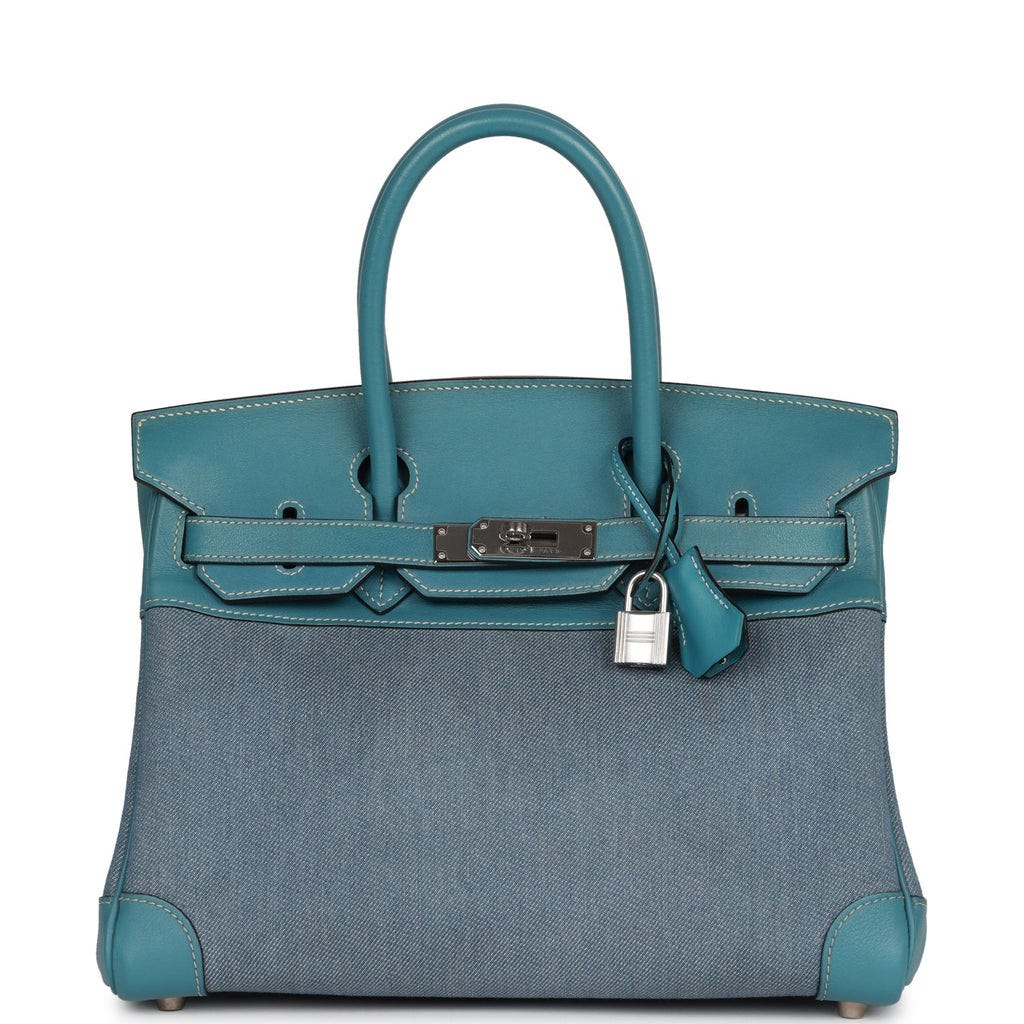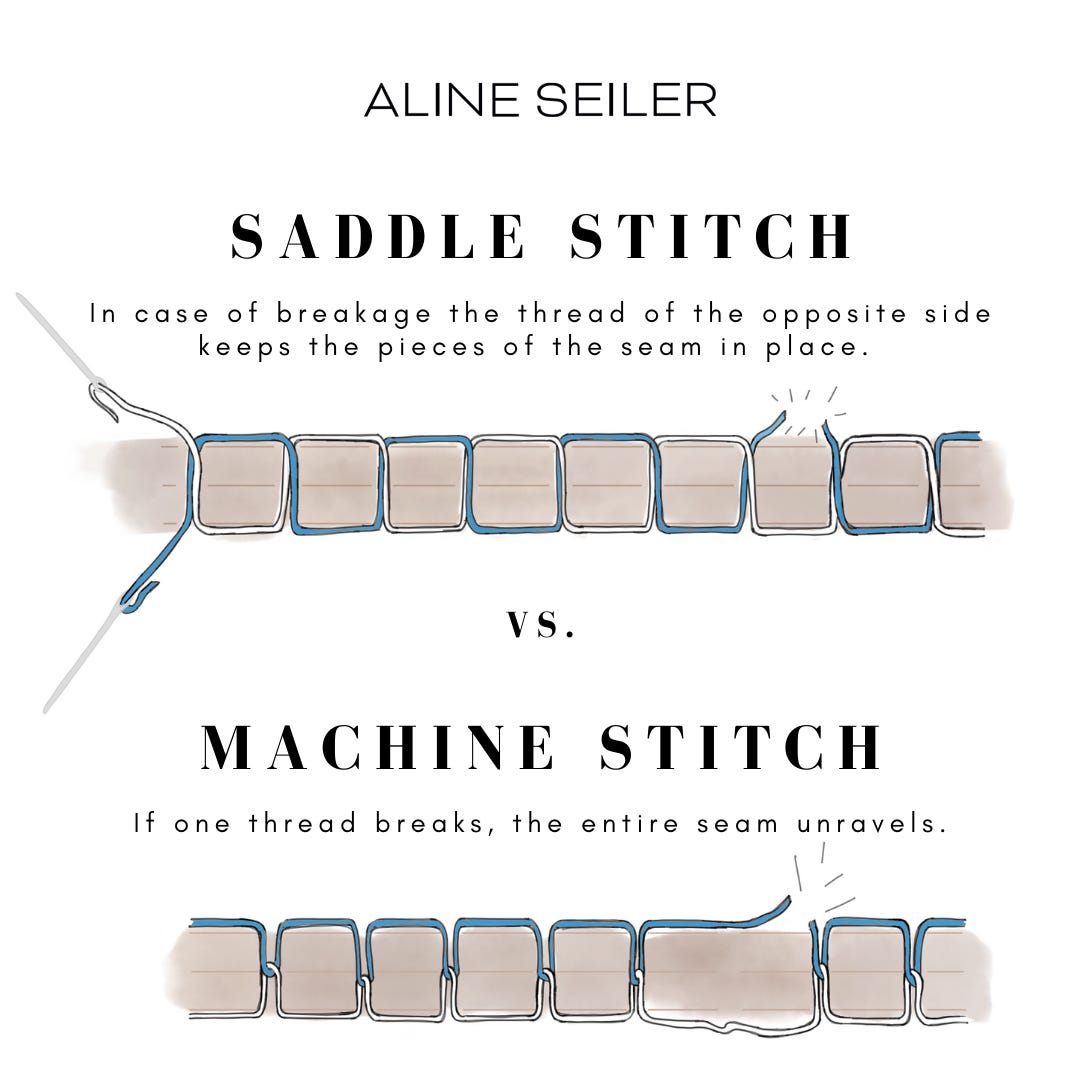I was first introduced to Japanese denim (also known as “selvedge denim” or “raw denim”) a few years ago on TikTok, as I am most niche things these days. When I’m intrigued by something I cannot be normal about it, ever. It becomes an obsession even if that obsession only lasts five minutes. However, Japanese denim sparked my creativity and I’ve thought about it quite a lot. During a daydream on the way to class last week, I wondered why Hermès hasn’t used much denim for their iconic Birkin bags. Hermès uses some of the most high quality materials known to man but they have only used denim in a few bags I’ve seen. Considering they make about 70,000 Birkins a year, I as a denim lover think it should be way more. It’s insane to me that other than leather and exotic skins, it is extremely rare to see a Birkin or any of their bags have another material. I think it’s a disservice to the consumer to be quite honest. So here’s my argument for why Hermès should use Japanese denim for a Birkin.

A Little History Lesson:
Japanese denim is known as the “world’s best denim.” That’s right people, forget your vintage pairs of Levis’ 501s. Blue jeans were only first introduced to Japan after WWII. In fact, during the U.S. occupation during that time, American soldiers started to sell their extra pairs of jeans. The youth in Japan took great interest into blue jeans because of James Dean and Marlon Brando. There was a limited supply of American-made jeans and they became very expensive because of the demand. Japanese retailers made a decision that would impact the history of denim forever; they began making jeans in a different way than the Americans. Japan, began producing denim with shuttle looms and with a reduced width. They also used indigo dying traditions which caused the pigment to fully penetrate the cotton fiber, leading to a natural fading of the jeans as they are worn over time. If properly taken care of, Japanese denim can last 5-10 yrs. or more. Not only were these jeans popular with the youth crowd of the 1960s, but also with streetwear culture in the 1990s and early 2000s. They’ve now been making a comeback within the niche fashion internet community.

On the other hand, Hermès has made some of the most high-quality, sought after, and iconic leather goods of the last half century. Hermès is one of the oldest luxury fashion houses, first founded in 1837 by Thierry Hermès. The brand was first known for crafting harnesses and bridles for the carriage trade (trade from upper-class people). The Hermès Birkin is, of course, one of the most recognizable bags in the world; named after actress, singer, and style icon, Jane Birkin. The bag fits an outrageous amount of stuff and the leather/exotic skins wear incredibly well. Each Birkin is sewn by a single artisan in France using Hermès’ signature saddle stitching. Saddle stitching is much stronger than machine stitching because “when a machine lock stitch breaks, the thread on both sides on the material is loosened and the product becomes weak or falls apart” (Barrett Alley). Along with sewing, the aritsan also buffs, paints, and polish the bag; taking up to 18 hours for one Birkin to be made. Hermès argues that the price of the bags (range from $20,000 to $250,000, in some cases, more) is justified because of the amount of work that goes into its creation. And, not anyone can walk into an Hermès store and purchase a Birkin. Each store location reserves a certain number of Birkins for a limited number of customers, and usually those who’ve made repeat purchases at the store are approached first to buy the bag.
So, why should Hermès make a Birkin made out of Japanese denim?
Mix of streetwear and high fashion.
The demand for casual luxury during Virgil Abloh’s reign at Off-White and Louis Vuitton has absolutely transformed luxury fashion. Would it be totally out of left field for Hermès do something streetwear related? 100%. But, I think it could be a unique opportunity to do something unexpected. Positioning themselves with streetwear would show that they’re not so stuck in their ways that they’re not willing to adapt to new cultural interests. Stop being so posh, Hermès.
It would promote sustainability.
Hermès has faced backlash in recent years for how they source their materials. Because of their dedication to craftsmanship, they only want to use the absolute best materials they can afford. Unfortunately, sometimes this means harming animals in the process. While, Hermès has assured consumers that they do not hunt animals anymore at least, I think it has left a stain on their reputation. In their Animal Welfare Policy, Hermès states “Hermès stipulates that all suppliers implement good animal welfare practices, supported by a rigorous independent audit regimen. The Hermès Animal Welfare Policy is implemented through the demonstrated compliance with all applicable animal welfare laws; implementation of certification standards that are considered to be equivalent to the Hermès animal welfare requirements; and by first- and second-party audits and improvement plans, initiated by Hermès working directly with suppliers on farms and in abattoirs.” Good on them.
Additionally, Japanese denim production has been known to reduce waste because some mills have created methods that recycle water used in the process of dyeing.
The bag would last a very long time.
Hermès products age beautifully, as do Japanese denim jeans and it’s clear that Hermès customers appreciate that quality. They want something that will stay in style, wear uniquely, and accumulate value, not depreciate.
The biodegradable fibers produced without synthetic additives, in Japanese denim, would generate a low carbon footprint.
Also, I think Hermès could document the process of making Japanese denim.
I hope this idea is manifested in the near future, I look forward to it.







